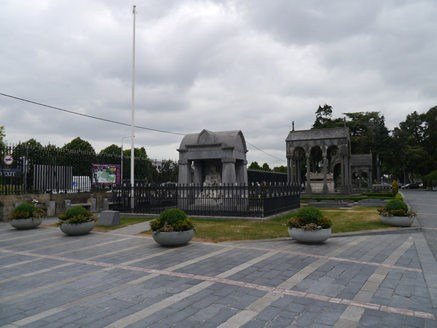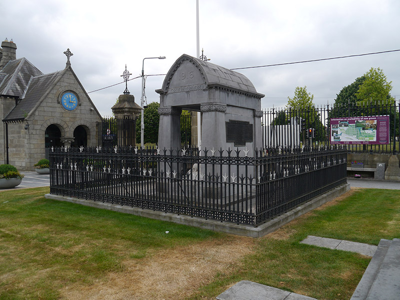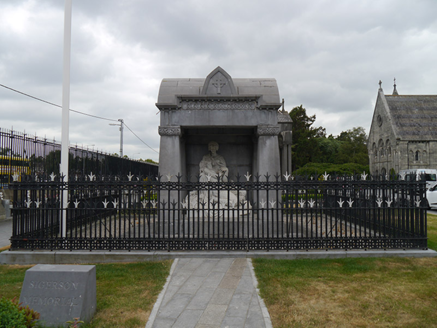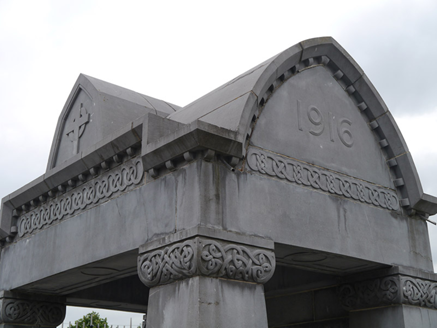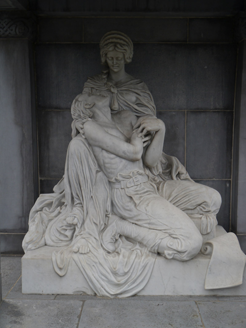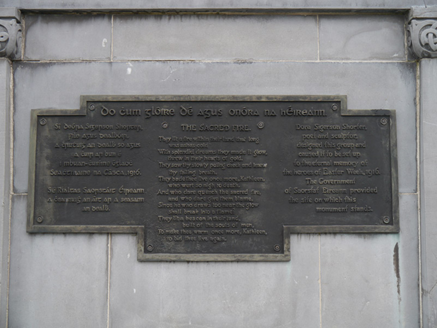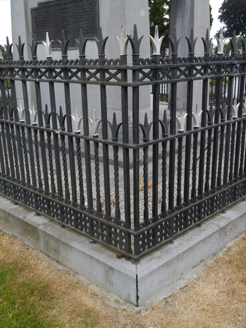Survey Data
Reg No
50130093
Rating
Regional
Categories of Special Interest
Architectural, Artistic, Historical, Social
Original Use
Grave monument
In Use As
Grave monument
Date
1925 - 1930
Coordinates
314691, 236884
Date Recorded
12/06/2018
Date Updated
--/--/--
Description
Freestanding limestone monument erected c. 1928, located adjacent to main entrance to Glasnevin Cemetery. Bowed ashlar limestone roof with chamfered cornice on corbel brackets; central section stepped to east and west elevations over Celtic interlaced band, repeated to gables; central gablets to east and west having simple Celtic cross motif; '1916' in relief to gable apexes at north and south. Roof canopy carried on square-based columns with heavy entasis and Celtic carved cushion capitals set on rectangular base. Solid ashlar limestone wall to west having bronze plaque inscribed with English and Irish translations of poem 'The Sacred Fire'; other elevations open. Figurative Carrera marble sculpture of nationalist 'Pieta' beneath canopy. Monument enclosed by decorative cast-iron railings on cut limestone plinth and stands within rectangular grassed plot. Freestanding limestone block to east, inscribed 'Sigersen Memorial'.
Appraisal
A prominent limestone memorial of the late 1920s marking the tomb of the Irish nationalist poet and sculptor Dora Sigersen (1866-1918), but principally memorializing those who died in the 1916 Easter Rising. It is dominated by a fine sculptural carving, designed by Sigersen, depicting Mother Ireland cradling the figure of a fallen rebel, after the style of Michelangelo's Pieta. The sculptor was a prolific writer and self-taught painter and sculptor, born into a culturally prominent literary family and developed her talents to become an important figure within the Irish Literary Movement, producing more than 20 collections of poetry. She had been profoundly affected by the events of 1916 and weeks prior to her death at the age of 51 she had compiled a volume of poetry entitled 'Sixteen dead men: and other poems of Easter Week'. Along with a bequest, the profits of the book were to pay for the memorial to the fallen of 1916, which was finally erected in the late 1920s, including both the sculpture executed to Sigerson's designs, and her poem 'The Sacred Fire', which is cast on a bronze panel to the rear. It is part of a prominent and high-quality memorial grouping adjacent to the main entrance to Glasnevin Cemetery, along with the mausolea of two Archbishops, and contributes to the considerable architectural and artistic heritage of Glasnevin Cemetery.
